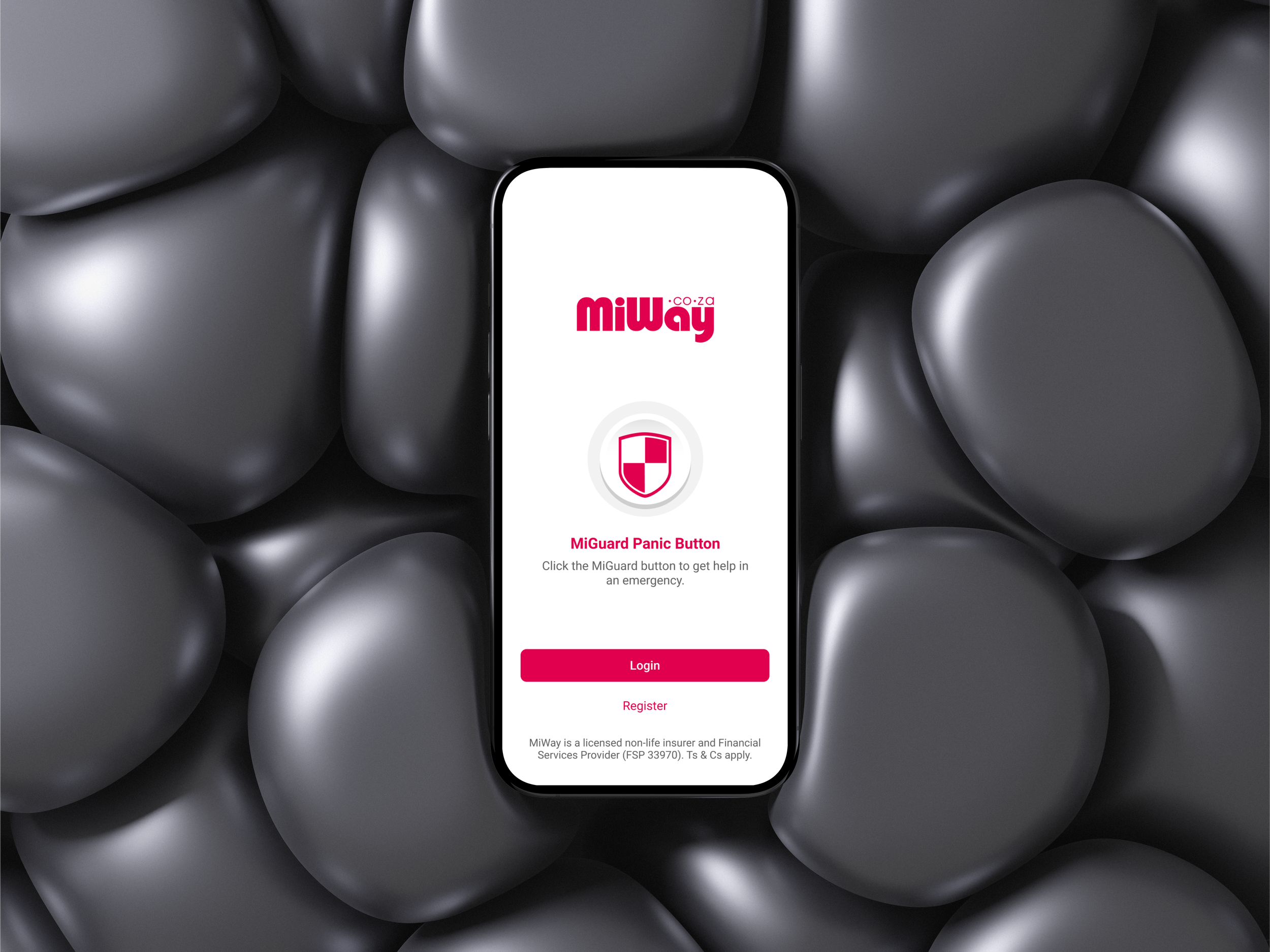
Creating MiGuard Panic Button – Designing for Customer Security and Digital Engagement
Project Overview
Product: MiGuard Panic Button
Client: MiWay Insurance
Launch Date: 30 August 2022
UX Designer: Lerato Serobatse
Project Duration: Over 1 year (pre-development)
Stakeholders: Product Owner, Product Manager, Digital Transformation Lead, Development Team
Sales (MTD): 323 MiGuard policies (new clients) at launch
Context & Problem
MiWay Insurance introduced the MiGuard Panic Button to provide customers with armed security assistance in dangerous or unsafe situations. The product was intended to serve as a smaller entry point for new customers into MiWay’s services, complementing the company’s core offerings like car and home insurance.
The project faced several challenges, including inconsistencies in business stakeholder expectations and a lack of foundational knowledge from the third-party company. Additionally, MiGuard would not be offered for free, unlike similar products from competitors, which posed a significant challenge in terms of customer adoption.
Discovery Phase
Competitor Analysis
A competitor analysis was conducted to assess both direct competitors like OUTsurance and DialDirect, and indirect competitors such as Apple. The analysis revealed that most competitors in South Africa offered their panic button services for free as a benefit to customers.
This insight posed a unique challenge for MiGuard, as it would be a paid product. The UX strategy had to account for this by emphasizing the added value MiGuard would provide compared to free alternatives.
UX Strategy
The UX strategy was designed to meet the challenge of pricing and align with MiWay’s broader digital goals:
Ease of Entry: Offer the MiGuard Panic Button as a smaller, affordable product to attract new customers and familiarize them with MiWay’s services.
Value Proposition: Clearly communicate the added value of MiGuard, emphasizing features like security customization, dependents management, and seamless app integration.
Digital Engagement: Leverage the product to increase engagement with MiWay's digital platforms, especially the app, WhatsApp, and online web.
Customer Journey: Ensure a smooth customer experience, from activating their account to using the panic button, making it easy for main members and dependents alike.
Stakeholder Involvement
The project began with a stakeholder envisioning session, where each stakeholder outlined their objectives and needs for the panic button. These sessions, spread across two meetings, helped unify the vision for the project.
Challenges
Inconsistencies in Deliverables: Conflicting ideas from business stakeholders delayed the start of development.
Vendor Clarity: The third-party company managing the functional security aspect lacked foundational knowledge, requiring MiWay to build the product framework from scratch.
Non-Free Offering: MiGuard would not be free, unlike most competitors, which required careful positioning and value justification to ensure customer buy-in.
Extended Project Timeline: These challenges extended the pre-development phase to over a year.
Design Approach
User Flows & Design Process
The team focused on creating clear user flows based on the key tasks for customers. Tasks included:
Activating the main member’s account.
Adding dependents (up to three) via the app.
Testing the panic button.
Instructions for using the panic button in emergencies.
Editing member and dependent details.
Managing panic button usage.
Design and Prototyping
User flows were presented to stakeholders for approval, after which low-fidelity wireframes were developed.
The team iterated on designs using MiWay’s existing UI components, refining them through multiple cycles.
High-fidelity designs were finalised, ensuring a seamless user experience.
Results
Launch & Results
MiGuard Panic Button officially launched on 30 August 2022. Initial sales were promising, with 323 new MiGuard policies sold in the first month. Despite the challenge of pricing, the product resonated with customers, signalling the effectiveness of the value-driven UX strategy.
Next Steps
The team plans to integrate the sales flow of the MiGuard Panic Button onto MiWay’s digital platforms (app, WhatsApp, and web), making it more accessible and further enhancing customer engagement.



